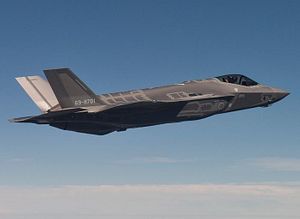Japanese Defense Minister Takeshi Iwaya said on 7 May that a search team has recovered parts of the flight data recorder of a Japan Air Self-Defense Force (JASDF) fifth-generation Lockheed Martin Lightning II F-35A fighter jet that crashed off northern Japan almost a month ago.
Part of the flight data recorder was recovered “on or after May 3”, Iwaya said. “The Defense Ministry is studying (the parts), but at this point, the all-important memory (of the flight data recorder) has not been recovered.”
Iwaya also noted that the retrieved part of the flight data recorder was heavily damaged. As a result, it is unlikely to help determine the cause of the crash, which remains unknown. Notably, the exact discovery location is being kept secret for security reasons.
The crashed stealth fighter was one of four F-35A fighter jets that took off from Misawa Air Base for an air combat training mission at 6:59 p.m., Japan time, on April 9. The F-35A disappeared from radar tracking systems at 7:27 p.m. on April 9 about 135 km (84 miles) east of Misawa Air Base, in the northern part of Japan’s main island of Honshu.
To date, only a section of the missing F-35A’s tail was found on the surface the following day. However, the pilot and the jets’ fuselage have been missing for four weeks now.
There has been media speculation that Russia or China will discover the crash site first and recover the ultra-sensitive military technology. However, U.S. and Japanese officials rejected that possibility. “No, I’m not,” acting Defense Secretary Patrick Shanahan said last month when asked whether he is concerned that China could reach the crash site first, according to the Air Force Times.
Nonetheless, the possibility of China or Russia retrieving bits of the aircraft cannot be ruled out entirely. “The fact the U.S. military put so much effort into searching for a single [JASDF] aircraft shows that it contained a high concentration of military secrets,” a Japanese government source in Tokyo was quoted as saying by The Asahi Shimbun newspaper on May 7.
“Because Russia and China are competing with the United States to develop an advanced fighter jet, they would do anything to get their hands on F-35A technological information,” a high-ranking JASDF officer told The Asahi Shimbun. “It is possible to extract secret information even from a single part of a small fragment.”
The U.S. Defense Department has chartered a privately-owned deep-sea search vessel, the Singapore-operated Van Gogh, to help with the search. It joined the Japan Agency for Marine-Earth Science and Technology research vessel Kaimei in the search for the missing aircraft. According to the Pentagon, the primary U.S. search effort ended in the third week of April.

































